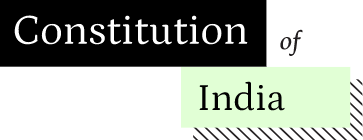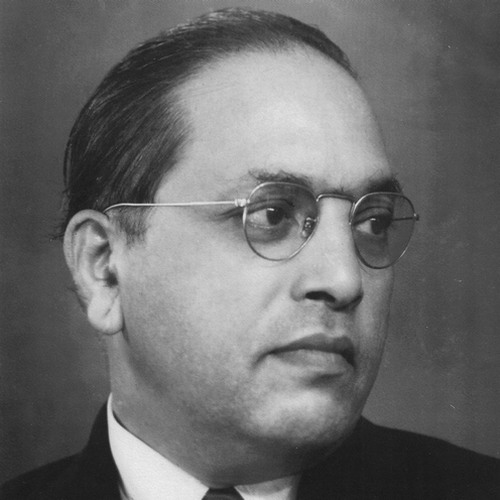Early Life
Bhimrao Ramji Ambedkar was born on 14 April 1891 in the Mhow Army Cantonment, Central Provinces (present-day Madhya Pradesh) to a Dalit family. His family’s low caste status resulted in his early life being marked by discrimination, segregation and untouchability.
Ambedkar’s academic life was prolific. He obtained a Bachelor’s degree in economics and political science from Elphinstone College, a Master’s degree from Columbia University in economics, a doctoral degree from the University of London in 1923, and another doctoral degree from Columbia University in 1927.
Ambedkar’s higher education in the USA had been sponsored by the Maharaja of Baroda, therefore he was obligated to return and serve under the Princely State. He joined the Accountant-General’s Office in Baroda in 1918, but he was forced to leave in only 11 days as he was unable to find any permanent place of residency due to his caste identity.
Role in India’s Independence Movement
Ambedkar’s role in the independence struggle was complex. Unlike the dominant political discourse that focused on persuading the British to cede greater power to Indians, and to eventually leave India, Ambedkar’s interventions and advocacy centred more around the protection and furtherance of Dalit rights. As a result, he often clashed with the Indian National Congress.
He worked towards putting in place political safeguards for untouchables, the first of which was his presentation to the Southborough Committee that was preparing the Government of India Act 1919. By the time of the Round Table Conferences in the early 1930s, he had become the preeminent leader of the Dalit community.
Here, he argued fervently for separate electorates for the ‘backward classes’, believing that this was necessary to transform them into a solid political interest group. But M.K. Gandhi felt that this would splinter the Hindu community, going on a fast unto death to reverse the British acceptance of Ambedkar’s demands. Consequently, Ambedkar had to give in under the Poona Pact of 1932, giving up separate electorates in exchange for reserved seats in provincial assemblies.
Ambedkar also played a key role in social movements that fought for the rights of Dalits. In 1924, he founded the ‘Bahishkrit Hitakarani Sabha‘ for the social upliftment of the ‘depressed classes’ with the motto: “Educate, Agitate, Organise”. In 1927, a Depressed Classes Conference was organised at Mahad, located in Raigad district. Here, Ambedkar led a historic protest that culminated in a large group of Dalits drinking water from a public tank, breaking repressive social and physical norms that had existed for centuries.
A few months later, he organised a public burning of the Manusmriti at the same place. This ancient Hindu law book was the most well known among several such scriptures which placed cruel social and legal constraints on the ‘untouchables’. The burning was a strong statement against the centuries old discrimination and repression faced by the Dalits.
Ambedkar was also a nominated member of the Bombay Legislative Council form 1926-34. He founded the Independent Labour Party of India in 1936 after the Government of India Act 1935 introduced responsible government at the provincial level. The party was able to win 15 of the 17 seats it contested in the Bombay Assembly elections of 1937. He then founded the All-India Scheduled Castes Federation in 1942 as a popular political front for the Dalits.
Contribution to Constitution Making
The Indian Constitution and its drafting process are often seen as synonymous with Ambedkar. He is often referred to as the father of the Indian Constitution, and is probably the most well-known of all Constituent Assembly members.
Ambedkar became a key figure in India’s constitution-making process due to the offices he held and his interventions and speeches in the Assembly. He was the Chairman of the Assembly’s most crucial committee – the Drafting Committee and a member of other important Committees. As its Chairman, he had to defend the Draft Constitution which the Committee prepared, and therefore intervened in nearly every debate.
On behalf of the Scheduled Caste Federation party, Ambedkar wrote and submitted States and Minorities to the Constituent Assembly’s Sub-Committee on Fundamental Rights. A mini-Constitution in itself, States and Minorities framed strong constitutional protection for the Scheduled Caste community.
Ambedkar’s interventions and speeches, on various aspects of the Constitution, were insightful, well-reasoned and scrupulously researched. This won him the support and respect of other members of the Assembly, who appreciated his leadership of the constitution-making project.
Later Contributions
Ambedkar was appointed as the first Law Minister of independent India in 1947. His most important intervention in this role was in the attempt to pass the Hindu Code Bill, to reform Hindu personal laws that dictated matters like marriage, divorce, succession and adoption. The Bill faced intense criticism from both within Parliament and outside. Ultimately the Government relented and withdrew the Bill, forcing Ambedkar to resign in frustration in 1951.
As a Scheduled Caste Federation party candidate, Ambedkar contested in India’s first general elections in 1952 from Bombay North Central constituency. The elections, dubbed as ‘the biggest experiment in democracy in human history’ by Sukumar Sen (then Election Commissioner) saw Ambedkar finish fourth in the race – an unknown candidate from the Congress party took home the seat. Despite his loss in the Lok Sabha elections, he was elected to the Rajya Sabha.
In 1956, Ambedkar along with 3,65,000 supporters converted to Buddhism, after having devoted several years to studying the religion. Ambedkar’s re-invention of Buddhism in the language of social justice is popularly referred to popularly as Dalit Buddhist movement, Navayana, or Neo-Buddhism.
In the later years of his life, his health worsened, and he passed away on 6 December 1956 in his sleep at his home in Delhi. His birth date is celebrated as ‘Ambedkar Jayanti’ in the form of a public holiday. He was posthumously given the Bharat Ratna in 1991.
Key Writings
Dr Ambedkar wrote several books in his lifetime. He wrote three books on economics – “Administration and Finance of the East India Company“; “The Evolution of Provincial Finance in British India“; and “The Problem of the Rupee: Its Origin and Its Solution“. “The Annihilation of Caste“, based on a speech he was supposed to give, is considered one of the most authoritative works on Dalit life and politics till date. His other writings include “What Congress and Gandhi have done to the Untouchables“, and “Pakistan or the Partition of India“. The Ministry of External Affairs has also published his entire collection of written works and speeches in 17 volumes.
- When Ambedkar introduced the Draft Constitution on 4 November 1948 to the Assembly, he defended the inclusion of administrative provisions in the Draft by invoking ‘constitutional morality’.
- On 25 November 1949, a day before the Constitution was adopted, Ambedkar vehemently argued that India must strive to be a social democracy and not merely a political democracy. Social democracy, he noted ‘is a way of life which recognizes liberty, equality and fraternity as the principles of life’.
- While defending the inclusion of Directive principles of State Policy in the Draft Constitution, he argued that while the principles did not have force in law, they were binding. He believed that they were like instructions regulating the power of the Legislature and Executive for peace, order and good government. He also felt that periodic elections would enforce these principles as legislators would be accountable to the people of India.
- On the issue of centralisation of power, Ambedkar clarified that the fundamental principle of federalism is the division of Legislative and Executive powers between the Union and the States in the Constitution. He reassured that the States were in no way dependent upon the Union government for their legislative or executive powers and that the Union and States were co-equals.
- Ambedkar stated that in choosing a parliamentary system of governance, the Indian constitution has prioritised responsibility and accountability over stability.
- Ambedkar’s World: The Making of Babasaheb and the Dalit Movement by Eleanor Zelliot (Navayana, 2012).
- The Radical in Ambedkar: Critical Reflections by Anand Teltumbde (Penguin Allen Lane, 2018)
- No Laughing Matter : The Ambedkar Cartoons, 1932–1956 by Unnamati Syama Sundar (Navayana, 2019)
- Writings and Speeches of Dr. Babasaheb Ambedkar (Ministry of External Affairs, Government of India)
- Ambedkar-Towards An Enlightened India By Gail Omvedt (Penguin, 2008)
- Dr. Ambedkar-Life and Mission by Dhananjay Keer (Popular Prakashan, 1954)
- Deconstructing Ambedkar by Anand Teltumbde (Economic and Political Weekly, 2015)
- Waiting for a Visa by Dr. B.R. Ambedkar (Govt. of Maharashtra, 1993)

